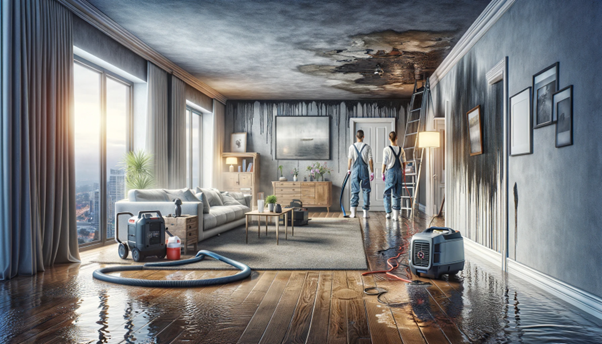- 1-905-452-8193
- Contact Us
- Member Login
- Get Listed Today
- 220,911 members

Water damage can strike at any time, wreaking havoc on homes and businesses alike. Whether it stems from a burst pipe, a roof with leaks, or the aftermath of a natural disaster, dealing with water damage can be an overwhelming experience. In such situations, knowing the right steps to take can make all the difference in saving your property and your peace of mind.
In this blog, we will guide you through the five essential steps in water damage restoration. Whether you're dealing with residential or commercial renovations in Vancouver, these steps will help you navigate the challenging aftermath of water damage effectively, ensuring a swift and thorough recovery.
The following tips will help homeowners in successful water damage restoration:
The first crucial step in water damage restoration is to assess the extent of the damage. Before diving into any cleanup efforts, it's essential to understand how deep the problem runs. Inspect the affected areas thoroughly, including ceilings, walls, floors, and belongings. This assessment will help you identify the source of the water damage and determine the level of contamination, which will dictate the appropriate restoration measures.
Safety should always be your top priority during water damage restoration. Turn off the electricity and gas supply to the affected area to prevent any potential hazards. If there's standing water, avoid walking through it as it may be electrified or contaminated. Wear appropriate protective gear such as gloves, masks, and waterproof boots when dealing with water damage. Taking these precautions is vital to protect yourself and anyone helping with the restoration process.
Once safety is ensured, the next step is to remove water and moisture from the affected area promptly. Use pumps, wet-dry vacuums, and dehumidifiers to extract excess water and humidity. Thoroughly dry all surfaces to prevent mold growth, which can compound the damage. Properly ventilate the area to aid in the drying process, ensuring no moisture is left behind.
Water damage often brings contaminants and bacteria into your home or business. Cleaning and disinfecting the affected areas is crucial to prevent health hazards. Use appropriate cleaning agents to sanitize all surfaces, including walls, floors, and personal belongings. If the water damage was caused by a sewage backup or contains harmful chemicals, it's essential to take extra precautions and consider professional assistance for thorough cleaning.
After completing the previous steps, it's time to focus on restoring your property to its pre-damage condition. Repair damaged structures, replace any irreparable items, and repaint or refinish surfaces as needed. Don't forget to address any underlying issues that may have caused the water damage, such as leaky pipes or a compromised roof. Professional contractors experienced in commercial renovations in Vancouver can assist with these complex tasks, ensuring a comprehensive restoration.
Water damage restoration can be a daunting process, but with the right knowledge and steps, you can minimize the impact on your property and your life. Whether you're dealing with residential or commercial renovations in Vancouver, these five essential steps are the foundation for a successful water damage restoration project. By assessing the damage, ensuring safety, removing water and moisture, cleaning and disinfecting, and finally, restoring and repairing, you can navigate through the aftermath of water damage with confidence and efficiency. Remember, prompt action is key to a swift recovery and preventing further damage to your property.
